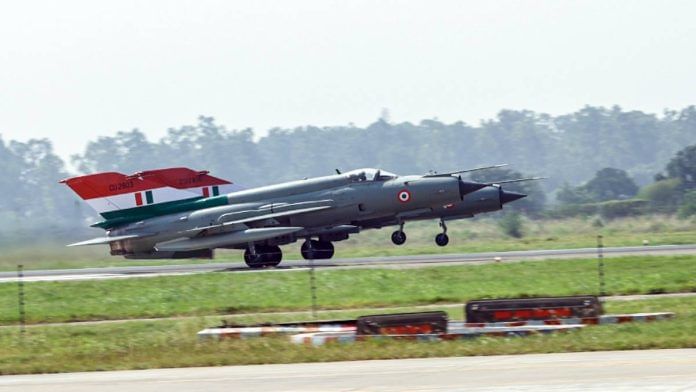Thank you dear subscribers, we are overwhelmed with your response.
Your Turn is a unique section from ThePrint featuring points of view from its subscribers. If you are a subscriber, have a point of view, please send it to us. If not, do subscribe here: https://theprint.in/subscribe/
For a long time, India was dependent on the global positioning system controlled by the United States. If we had left it that way, operations like targeting enemy positions across borders would have faced serious challenges. I remember, decades ago, being part of a project where some of us wanted to develop operational software on an indigenous or open platform. The idea was bold for its time ,to free ourselves from foreign dependence. But India was not ready then; the infrastructure and confidence were still growing.
Years later, during Operation Sindoor, India had a GPS of its own. It was not as refined as Western systems, but it served the purpose ,and most importantly, it was ours. That small success marked the beginning of a long road toward technological independence. Like all technology, it continues to evolve, and what was once “adequate” will soon be world-class.
Today, warfare has changed completely. It is technological, constant, and often invisible. Data in the cloud, open networks, and imported software running on aircraft, ships, and weapon platforms all carry vulnerabilities. Even peacetime systems ,power grids, financial networks, judicial databases, and electoral systems ,are open to intrusion or manipulation. The line between war and peace is now dangerously thin.
That is why developing indigenous technology is not an option; it is an obligation. We can no longer afford to rely on others for the tools that define our sovereignty. The old mindset of import dependence must give way to innovation and self-belief ,and that shift has begun.
In defence production, India’s progress is visible. Aircraft like the LCA Tejas prove that India can design and deploy world-class fighter jets. The Advanced Medium Combat Aircraft (AMCA) under development will push that further. In artillery, the Dhanush and ATAGS guns show Indian engineers can deliver reliable, accurate, and battle-ready systems. The Navy’s INS Vikrant, India’s first indigenous aircraft carrier, stands as a powerful symbol ,built in India, by Indians, for India.
But self-reliance cannot rest on hardware alone. The modern battlefield ,and modern governance ,runs on software. Here, Indian talent has already made its mark. Companies like Zoho, TCS, and Infosys show that world-class software can be built entirely in India. Zoho’s workplace suite, developed and hosted domestically, is a shining example of secure, scalable, indigenous capability ,proof that India can create global products without dependence.
Another vital area is semiconductors ,the chips that power everything from missiles to mobile phones. Recognizing their strategic importance, India has launched major initiatives to develop a domestic ecosystem. The goal is not just assembly but design and fabrication within the country. New fabrication units in Gujarat and Tamil Nadu mark the start of this journey.
Equally crucial is rare earth exploration ,minerals essential for electronics, magnets, batteries, and defence technology. India’s rare earth initiative can help counter decades of Chinese dominance. Exploration in Andhra Pradesh, Odisha, and Kerala could establish an alternative supply chain and strengthen India’s strategic position.
Energy security forms another cornerstone of sovereignty. India’s oil and gas exploration, both domestic and overseas, aims to cut dependence on volatile imports. New deep-water and shale projects are underway, while parallel investments in renewable energy and green hydrogen are building the base for future independence.
All these sectors ,defence, digital, materials, and energy ,are connected. The success of one supports the strength of the others. To secure our borders, we must secure our data. To grow our economy, we must protect our energy. The principle is simple; control what you depend on.
India has both the talent and the will. What we need is a unified direction ,urgency that cuts across ministries and industries. The public and private sectors must act as partners, not rivals. Bureaucratic red tape, which has long slowed innovation, must give way to speed and flexibility. Universities must work closely with defence and technology industries, nurturing the next generation of scientists and engineers.
Operation Sindoor showed that even a modest home-grown system can be a force multiplier when guided by clear intent and skilled hands. The same spirit must drive every aspect of our technological effort today. Dependence, once a habit, is now a hazard.
India stands at a defining moment. The global environment is uncertain, competition fierce, and threats unpredictable. Yet this is also India’s opportunity to rise as a technologically sovereign power, trusted by allies, respected by rivals, and confident within.
The nation that controls its technology controls its destiny. India must never again allow its security, economy, or progress to rest on the mercy of others. Self-reliance is not a slogan ,it is survival, strength, and the surest path to lasting peace and pride.
(The author is an Indian Army veteran and a contemporary affairs commentator. The views are personal. He can be reached at kl.viswanathan@gmail.com)
These pieces are being published as they have been received – they have not been edited/fact-checked by ThePrint.


